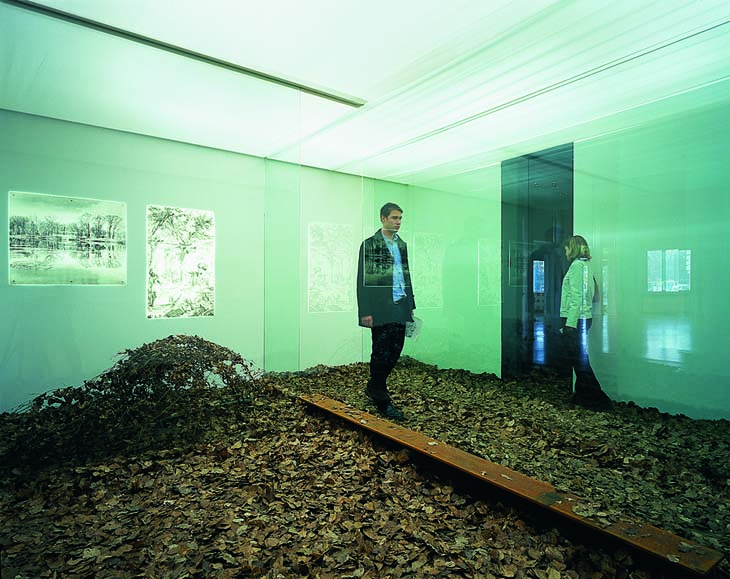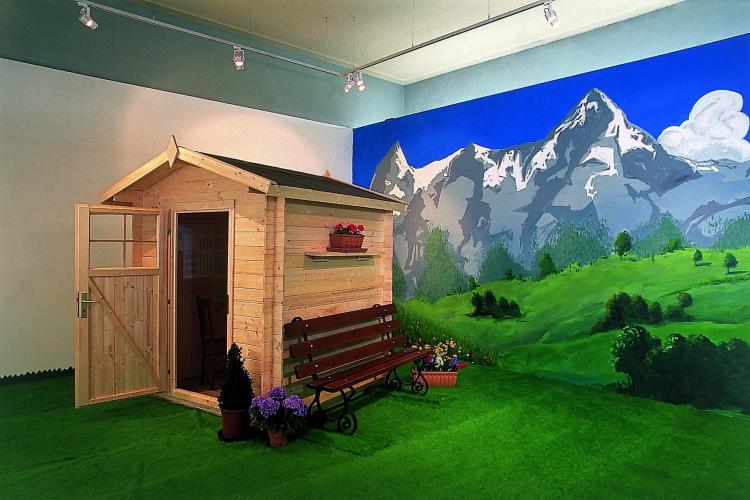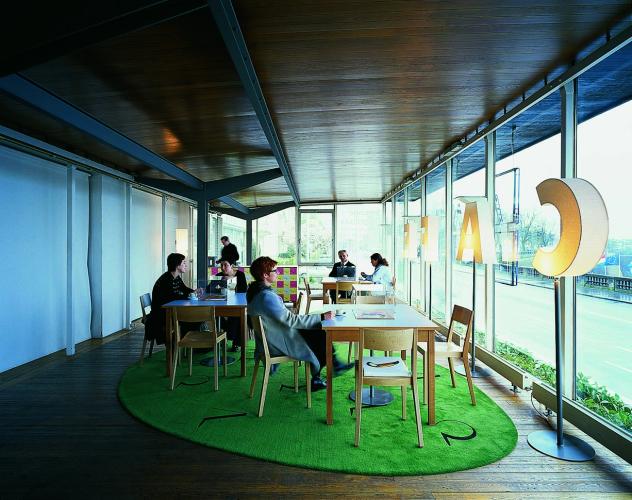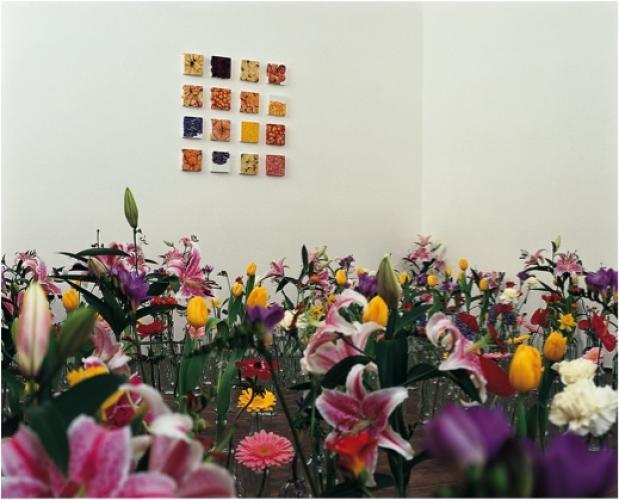
Strange Paradises
Taking its cue from the Domaine de Marcel et Joseph, the permanent installation and genuine "aesthetic resting place" made by Bert Theis in 1998, the Casino Luxembourg is putting on from April 15th through June 25th, 2000, an exhibition including artists who have been asked to present a very personal interpretation of the notion of "paradise". Strange Paradises presents site-specific projects in the different rooms of the Casino Luxembourg by artists whose approaches are mainly placed at the crossroads of the usual artistic categories.
From the spiritual metaphor to the affirmation of an irreplaceable hic et nunc, paradise is shown through a broad spectrum of complex arrangements, which include mural drawings, manufactured objects, installations, videos, photographs, even a working café.In Antiquity, the word "paradise" (of Persian origin) was a reference to the kings' gardens in which wild animals were kept. With Christianity, paradise became synonymous with the place where Adam and Eve lived in harmony with nature, before being condemned to earthly life; it was also the place where Christians found eternal rest after death. From the start, paradise has implied the notion of a wonderful haven of peace and happiness. In the High Middle Ages, paradise was often associated with the concept of the Last Judgement (Jan Van Eyck, Roger van der Weyden, etc.). For the Romanticists, it signified the quest for a "pure" world. In the 19th century, Baudelaire linked it to the mental state brought about by the overuse of opium: a sort of psychological paradise which allowed an escape from society (Les Paradis artificiels). This idea was taken up by Sigmund Freud, who developed it along the lines of the subconscious and psychoanalysis. Today, the image of paradise is that of a limitless pleasure and freedom, without reference to its meaning...The choice of the artists - obviously subjective and taken as such - was based on two main criteria: the potential of various approaches to produce poetic and personal worlds, and the wealth of possible associations by intermingling cultures and disciplines.For instance, Haluk Akakçe offers a video which has as its main theme the passage towards a pure world, Line Bergseth leads us into a flowery space, Mark Divo reproduces his personal and chaotic environment, Vidya Gastaldon and Jean-Michel Wicker have created a world which is simultaneously sensual and ethereal. Suchan Kinoshita and Hasje Boeyen confront us with an endless wait, Mischa Kuball stages light and its reflection by an "impure earth". Ugo Locatelli has staked out paradise and provides it with a map and a taxonomy, Bady Minck subverts the kitsch landscape of Haider's Austria by building a hut of clandestine resistance connected to the Internet. Christian Pantzer set up a cafeteria, Jorge Pardo a silk-screening machine, Philippe Paul Schmit has carved out a pathway through light into darkness, and Georgina Starr plays over scenes from her personal universe, whereas Bert Theis "patches up" the Domaine de Marcel et Joseph and brings it up to date.The artists have combined different worlds which move between visual arts, architecture, design and cinema: most of the proposals, even if they do not in themselves make up a paradise, will perhaps show that there is no such thing as a single paradise for all mankind, and that the very concept of paradise is brought up short by a fundamental limit in human thinking: that of eternity. Indeed, all the discussions with the artists reached the same conclusion: paradise, as a place of everlasting and immutable peace, would soon become a hell...
Partners
Supported by: Fondation de l'Architecture et de l'Ingénierie Luxembourg. In collaboration with Arendt & Fils and Miroiterie Origer s.a., The British Council, Mondriaan Stichting, Prohelvetia.


